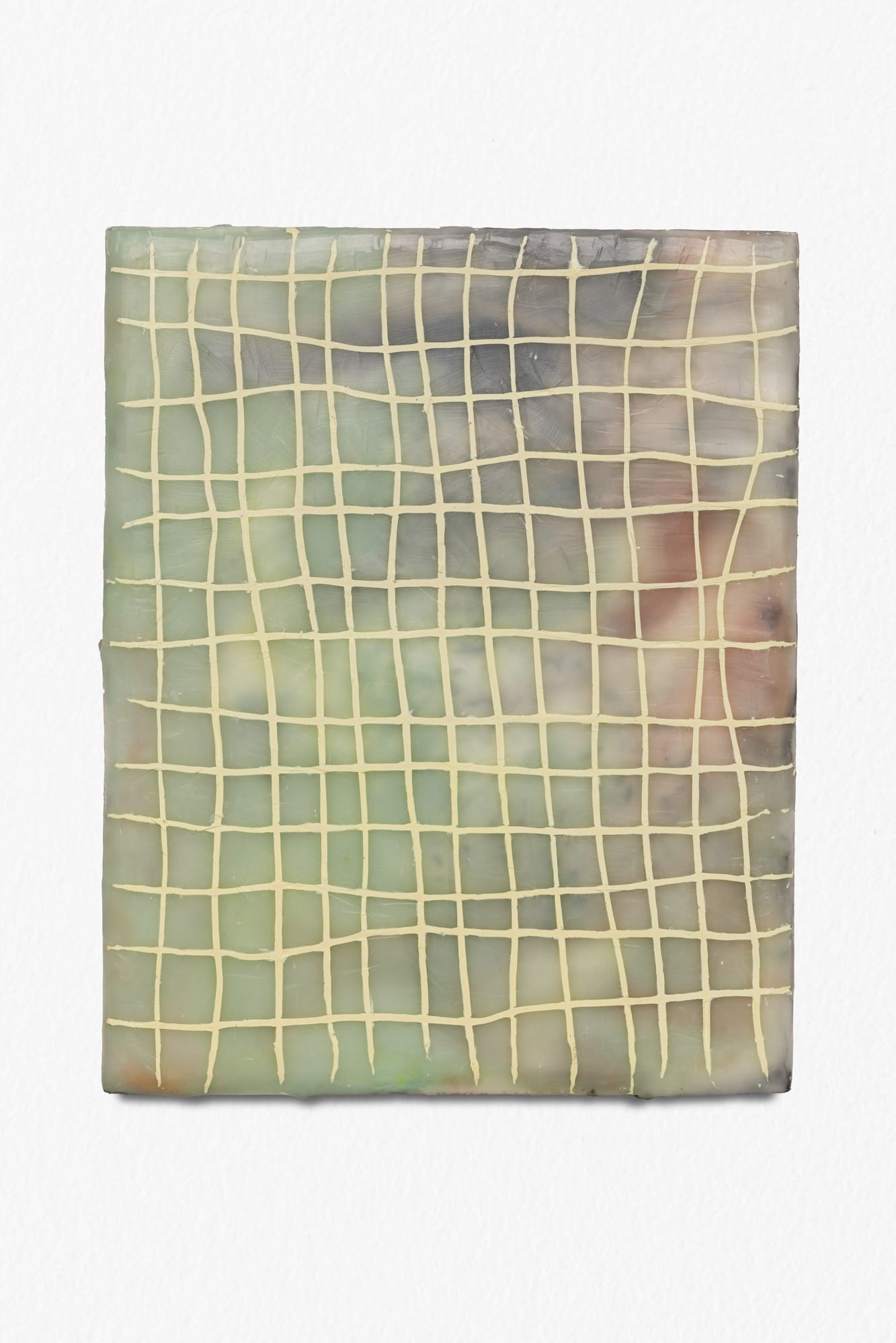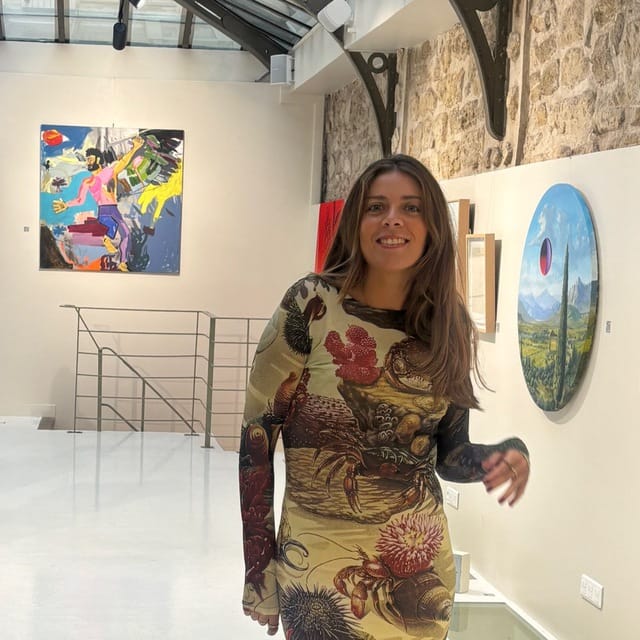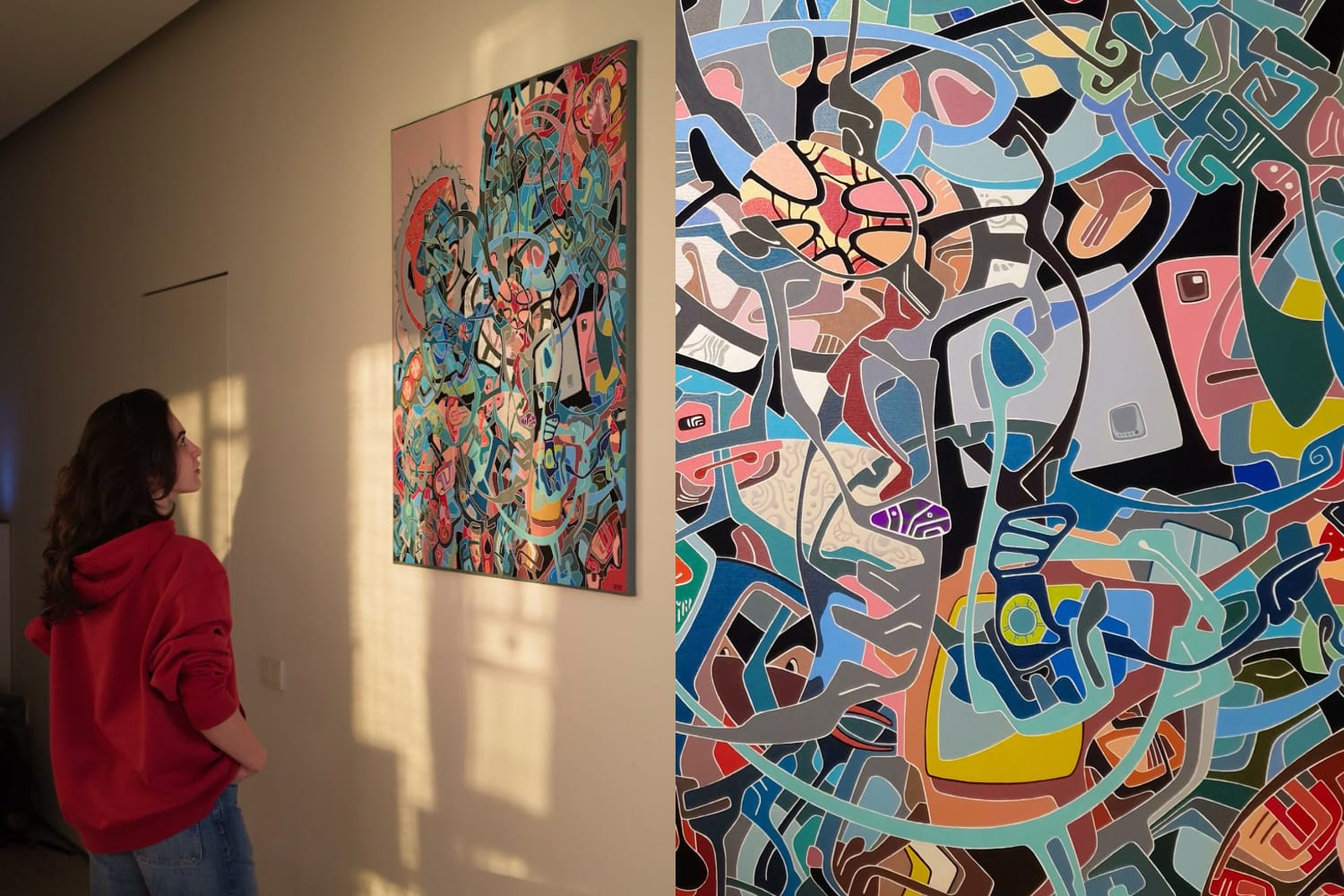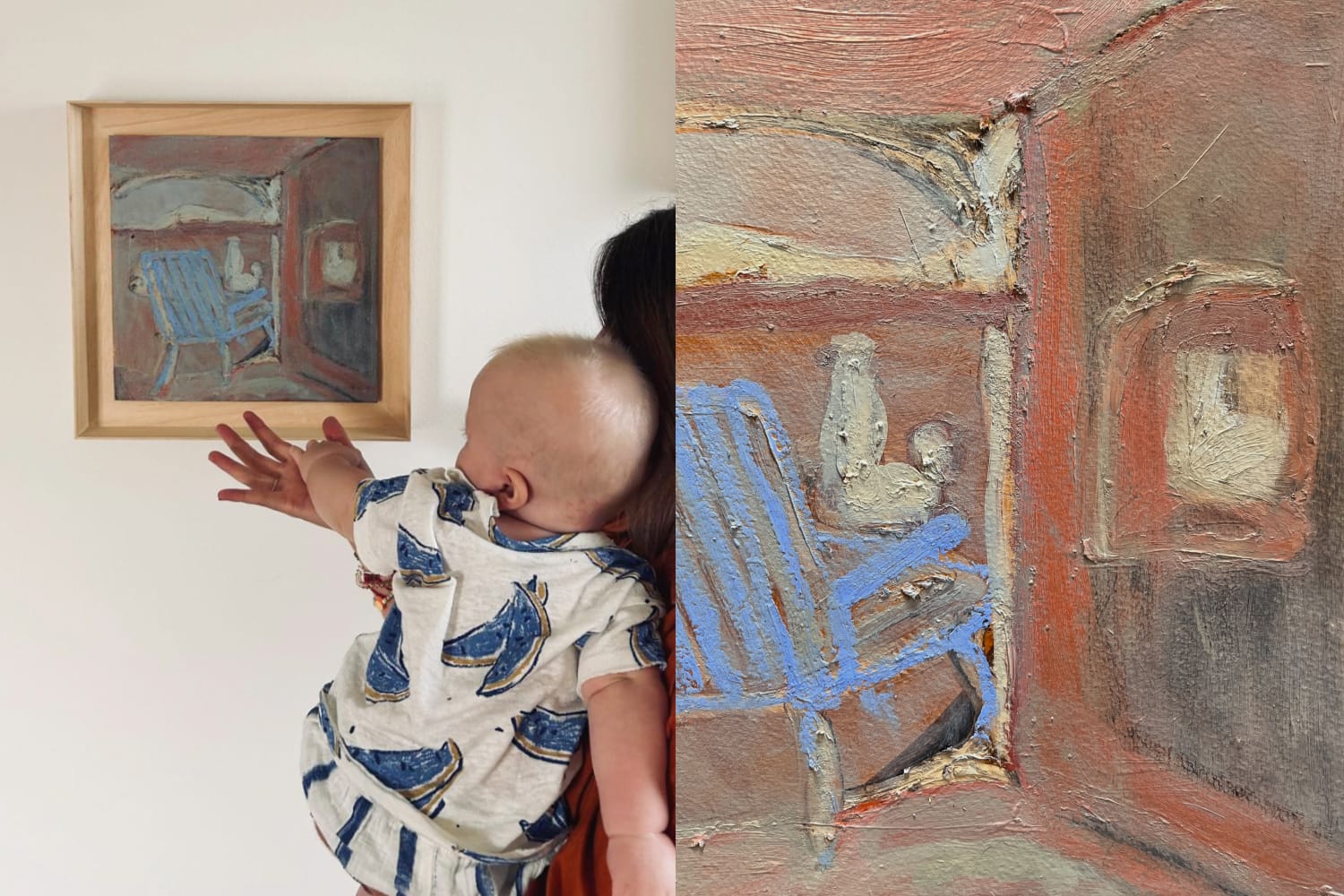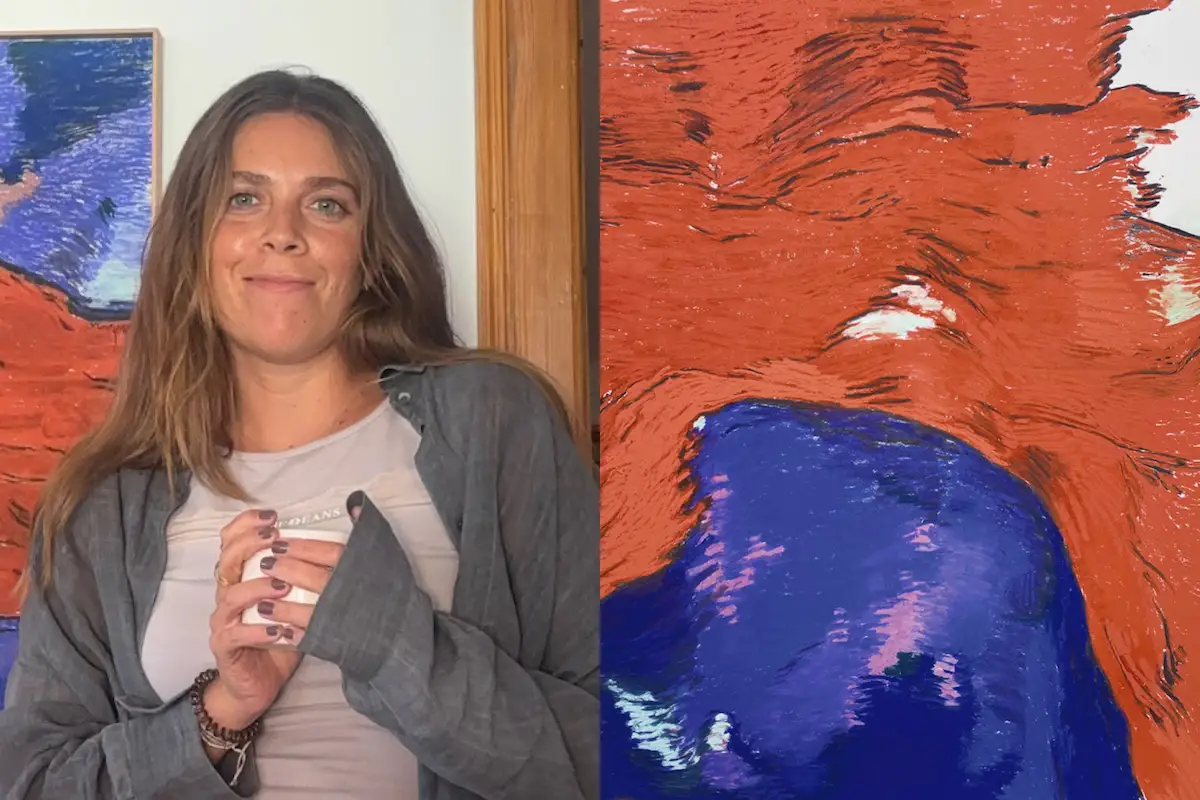Three questions to Teresa Supico

About Teresa Supico
Teresa Supico is a Portuguese painter and printmaker whose work pushes the boundaries of traditional techniques through material experimentation. Known for her dynamic approach, she blends classical methods with unconventional materials—such as felt, sponges, beeswax, resin, and raw pigments - to craft rich textured, tactile pieces. Her process is deeply intuitive and rooted in curiosity: a search for something alive, unpredictable, and sensorial. She engages with materials playfully, treating experimentation as a dialogue—developing new techniques or reimagining traditional ones to unlock each material’s unique potential. Only once she has built a relationship with the medium does she begin to layer in more formal elements like drawing and composition.
Her distinctive practice reflects a deep fascination with the physicality and unpredictability of different mediums, inviting viewers to reconsider relationships between material, process, and meaning.
Teresa, when did art meet you in life? Tell us about your journey and the influence of having a family in the art world.
It always felt natural to me to see people with a brush between their fingers. My mother loves to draw and, for many years, kept a home studio where she restored porcelain and faience pieces. Her work demanded meticulous technique, and I witnessed her mastery through it - an attention to detail she still holds today.
Art was woven into my childhood in many forms. One of my great-grandmothers was a gifted watercolorist who painted my portrait several times as I grew up. My studio is in the house she lived in so I still see her paintings everyday. On the other side of my family, my other great-grandmother was a remarkable painter who was active in the early modernist movement of the 19th century. She studied and lived among influential artists, including Almada Negreiros. Although she passed away at a young age and never gained widespread recognition, her paintings were a constant presence in my life all over the walls of the house I grew up in. I found them both mysterious and captivating, and her technique left me in awe, making me wonder how she was able to create such extraordinary pieces. Would love to have met her but I get to imagine how she was like through her work - maybe a bit melancholic but deeply passionate about her practice.
My grandfather was an art collector, and I grew up surrounded by paintings—particularly classical works by classical Spanish painters. My godmother is also a talented painter who works primarily on wood furniture and decor home pieces. I spent countless hours of my childhood in her studio, drawing and painting by her side.
Though most of them ever called themselves “artists,” they had a great influence on me. Through them, I developed an early and lasting love for the craft of painting.
Even though my family provided all this background, one of the most formative influences in my life as a painter and maker, was Felicidade - a family friend who mastered the art of making registos. These small boxes, traditionally used to house stories tied to religious figures, became a personal medium for her. She spent her whole life making them. She reimagined the form, using registos to tell all kinds of stories—from religious to personal, mythical, fantastical and imagined. Her work is out of this world...
She is much older than me, almost like a grandmother—and lives a free-spirited, minimalist life. She gets by with very little, yet her home was the richest place I had ever seen: filled with strange and beautiful objects in every corner, vivid colors, and all sorts of images covering every wall. I always want to cover my walls with images because it reproduces how comfortable I felt during every minute spent in her house while growing up.
I would visit her very often since we were close friends but with the ages of 14 and 15, I visited her every week for a whole afternoon to create my own registos under her guidance. Felicidade taught me to free my mind, trust my instincts, and view the world - and life itself - as an endless well of material to draw from in our work. I still visit her to this day, and we continue to have the most enriching conversations.
Your perfect blend between traditional technique and unconventional materials (felt, bee hive, wax) is brilliant, can you elaborate a bit more on your techniques?
Thank you so much. For me, the medium is always the starting point. My primary focus is the material itself, rather than representing something specific from the outside world. While the impulse to create a particular image does emerge during the process, it isn’t the driving force. Instead, I am fascinated by what a material can do, what it contains, and how it behaves—exploring its possibilities becomes the true core of my work.
Often, I begin with an unconventional material. I have used wax, resign, pigments, foam, sponge, felt, you name it…
Something that feels rich in texture, alive, tactile, unpredictable. I spend time experimenting, almost like a form of play, inventing new techniques or adapting traditional ones to suit the unique properties of that material. Only after I’ve found a way to work with the material—after I’ve built a relationship with it—do I begin to incorporate more classical elements like drawing or composition.
In this way, traditional technique becomes a kind of second layer—something I apply once I’ve understood the language of the material itself. It’s a process of dialogue, not domination. I am interested in the friction that comes from layering something refined and controlled over something raw and unpredictable.
Ultimately, my goal is not to master the material, but to collaborate with it—to let it shape the work as much as I do.
You recently participated in a residency in Berlin. What was the most significant experience or insight you gained that has influenced your art?
During the residency in Berlin, I was challenged to do things I hadn’t been asked to do in Portugal. One of the most significant was having to speak about my work frequently and openly - not just in formal settings, but through regular studio visits where curators, fellow artists, and guests would drop in and engage in conversation. This meant discussing the work as it evolved, often while it was still unresolved.
This experience pushed me to articulate my process in a more instinctive and informal way. It allowed the work to exist in dialogue with others, rather than in isolation. I began to understand that the way I speak about the work could change alongside it—that it didn’t need to be static or overly defined.
Berlin itself played a big part in that shift. As I moved through the city—reading new books, meeting new people, seeing exhibitions, and spending time between its underground nightlife and quiet green parks—I was immersed in a reality that felt fully exposed. People expressed themselves without restraint, and that honesty was reflected even in the way exhibitions were written and presented. There was an absence of the intellectual pretension I often sense in Portugal, and that made space for a different kind of clarity and experimentation.
That openness led me to explore parts of my practice I hadn’t planned to. I ended up creating something entirely different from what I had intended when I arrived. And that, in itself, was a key insight: I’ve learned that my work doesn’t benefit from trying to control where it goes. The process is unpredictable by nature, and allowing it to move freely is often where the most interesting outcomes happen.
Our top selection of Teresa's works
